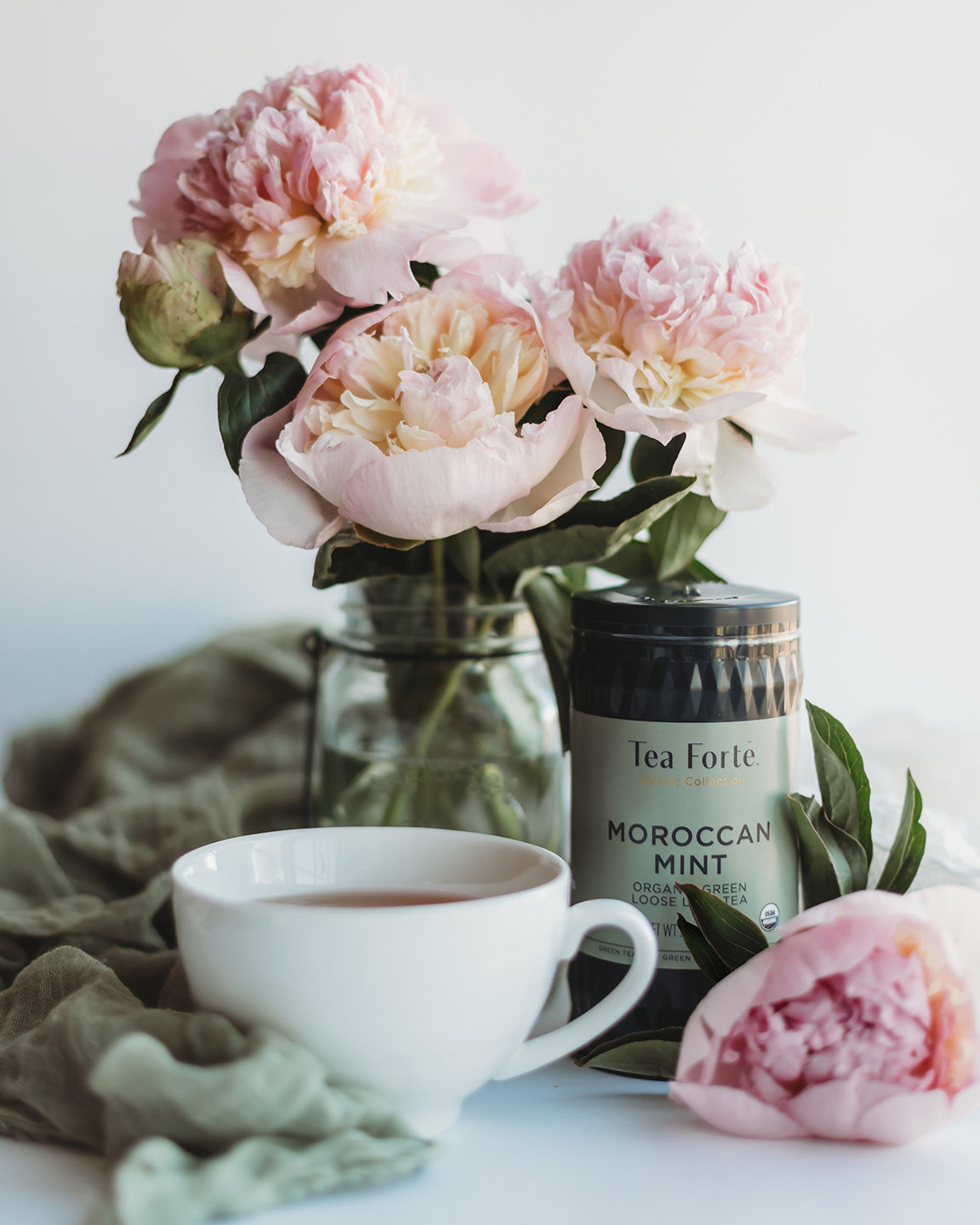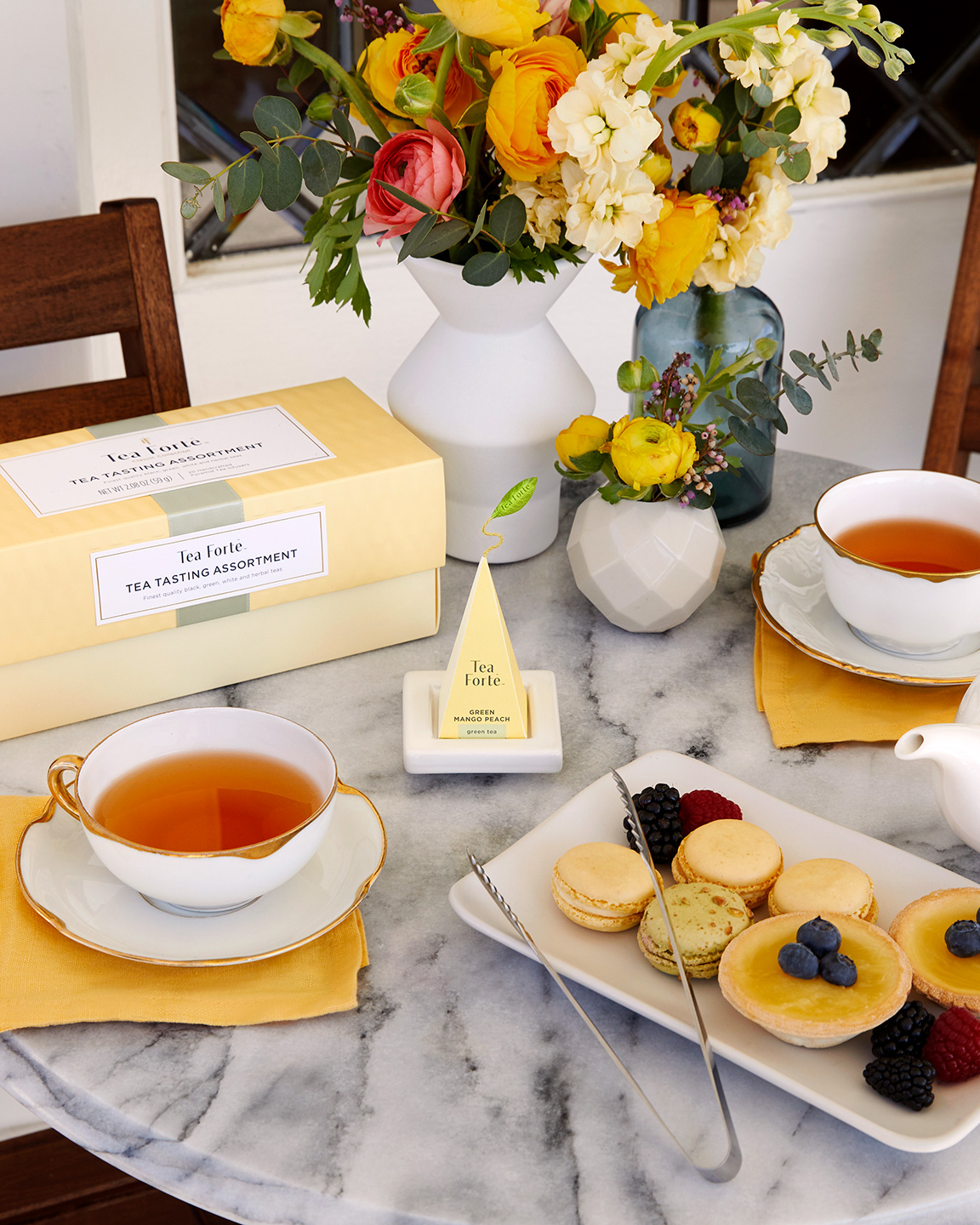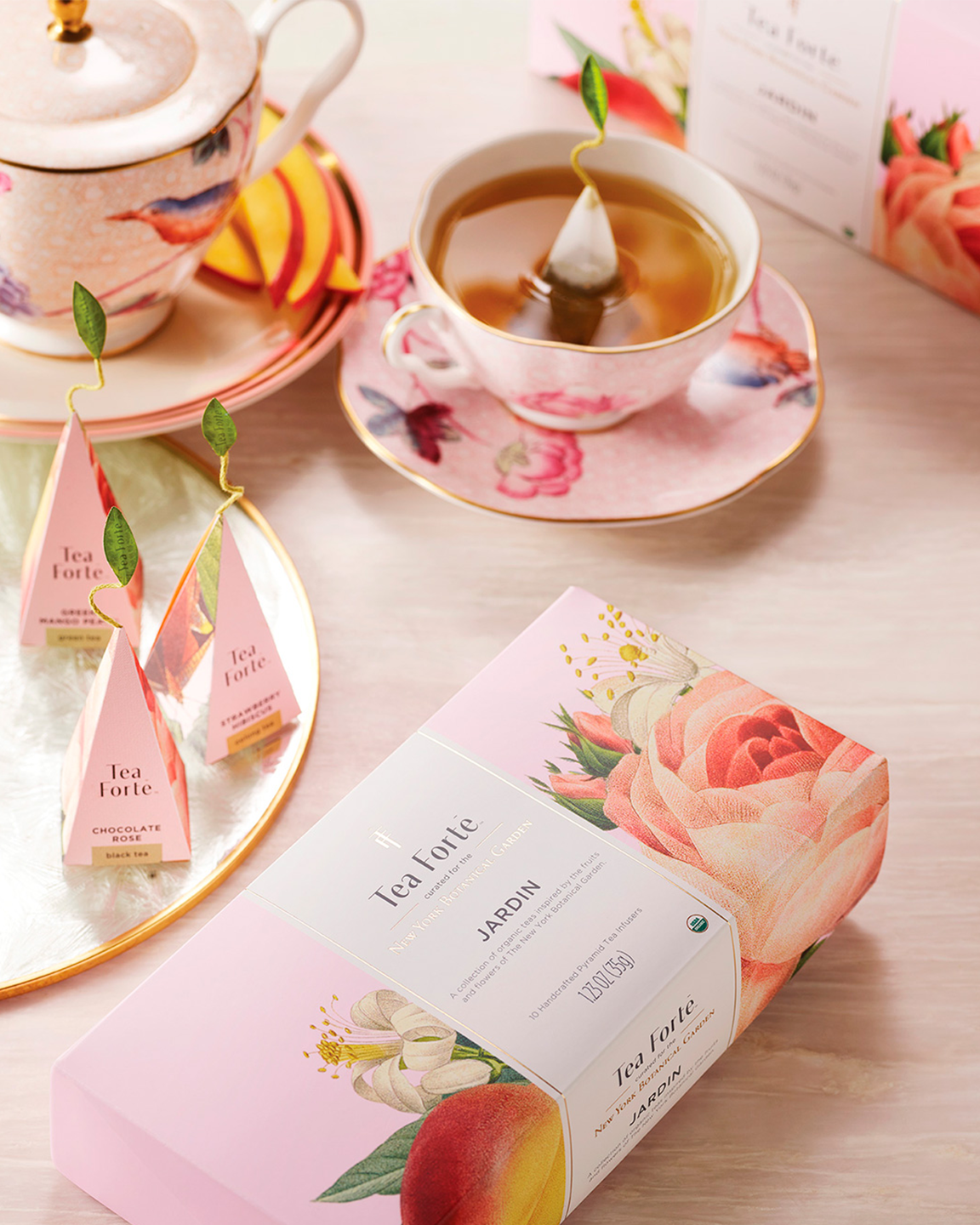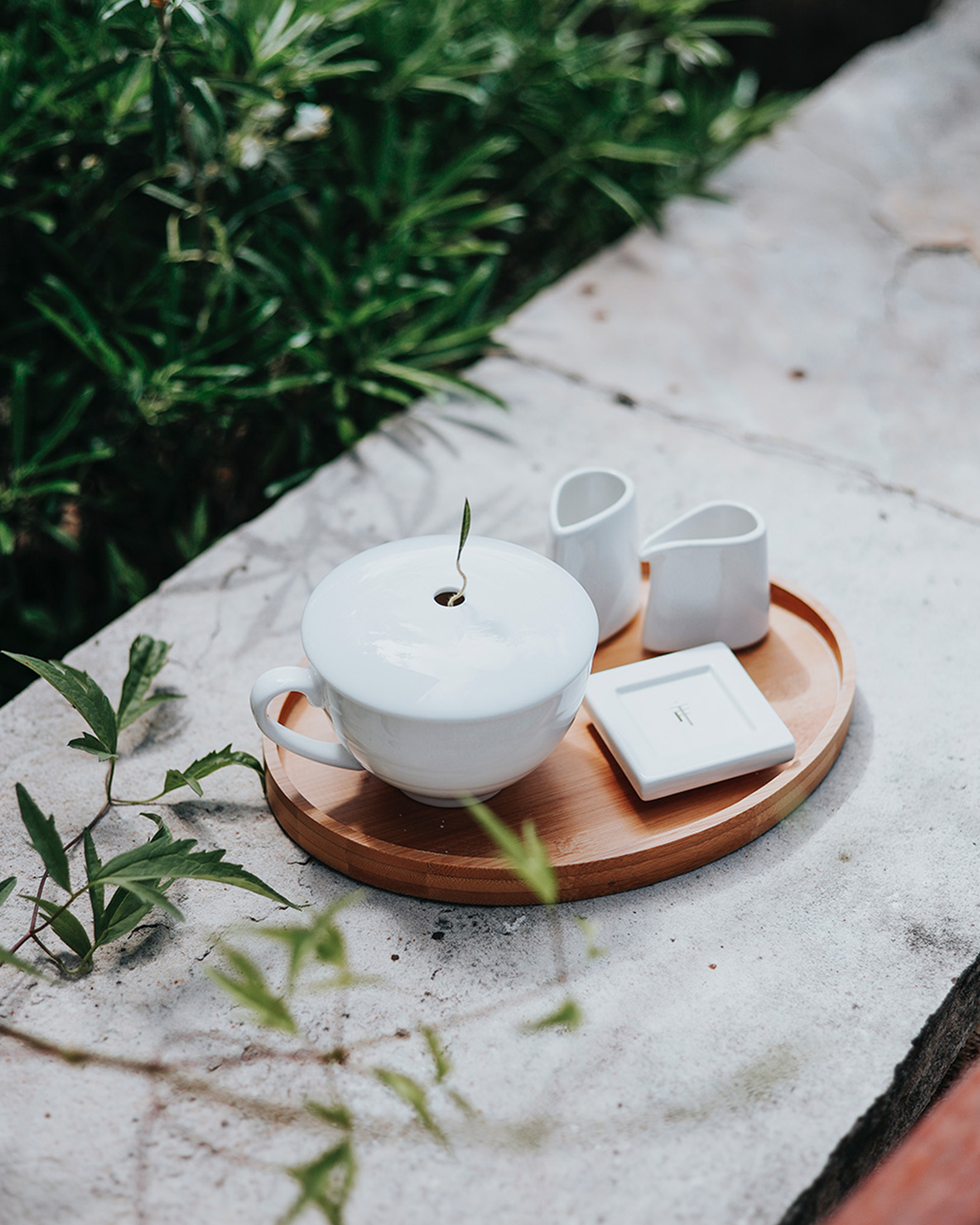TEA HISTORY & KNOWLEDGE

A DRINK FOR THE AGES
Tea has a rich and complex history filled with political intrigue, social divisions, cultural tradition and mystery. Even tea's origin is a bit mysterious, but it's a good place to start.
ORIGINS
Many have heard that tea's beginnings are traced to China in 2737 B.C. when an errant tea leaf blew into the cup of hot water that Emperor Shen Nung was drinking. But many people do not know the rest of the tale. Emperor Shen Nung was also said to have the head and horns of a bull...and a transparent stomach. He would eat plants and herbs and visually observe their effect on his body. The stories say that he was poisoned 72 times in one day. So, it is clear that the "truth" behind the discovery of tea is steeped in lore and mythology.
In 1978, K. Jelinek claimed in his Illustrated Encyclopedia of Prehistoric Man that there is archaeological evidence that homo erectus consumed tea in boiling water during the Paleolithic Period, about 500,000 years ago! In any case, it is clear that tea has been an important part of the world's culture for thousands of years.

CHINA, THE "BIRTHPLACE OF TEA"
In the 8th century, China's T'ang Dynasty, the Emperor selected his first "tribute tea." He ordered the farmers of Yang-Hsein, near Shanghai, to grow tea instead of rice. Great famine resulted for the families. The practice of "tribute tea" or "imperial tea" continued through the reign of many emperors, with the required plucking practices becoming more stringent over time.In 780 A.D., the first book of tea was written: "Ch'a Ching", by Lu Yu. This ten-part, three volume book explored the spiritual and ceremonial traditions of tea. At that time, tea was called "Jade Queen" and it was thought to represent the universe's mysteries.
Tea was generally available in compressed "brick" form during this period and was used as currency. To brew it, chunks were broken or grated from the brick and the tea would then be flavored with everything from dates to peppermint to onions.
TEA MAKES ITS WAY INTO THE WORLD
In 805, tea seeds first reached Japan via a Buddhist monk named Dengyo Daishi (also known as Saicho) who had been studying in China. It is believed to have traveled to Korea also through Buddhist monks, sometime between the 4th and 7th centuries.
In the Sung Dynasty (960 - 1279), tea met with several important changes. First, the compressed form of tea was replaced by ground leaves which were then whipped into a frothy brew. More importantly, China began to use tea as a tool for trade and control. The Tea & Horse Caravan Road was built so tea could be transported to Tibet in trade for war horses. In one year, 20,000 Tibetan horses were exchanged for 15 million kilograms of tea. China regularly traded or withheld tea to force political action within its empire.
The early development of the Japanese Tea Ceremony, Chanoyu, began to appear in this period as whipped matcha tea was introduced to Japan by Eisai in the late 12th century. By the 15th century the ceremony was more firmly established with the influence of Murata Juko and in the next century, Sen no Rikyu, the best known figure in Chanoyu history.
In the 1300s in Japan the concept of "tea tournaments" or "tocha" sprung up. Teas were presented to "contestants" who had to identify the tea's name and source (region AND plantation). Up to 100 teas could be part of the challenge. By the 15th century, Japan had a full-blown movement, combining the worship of the natural world with simplicity and harmony. It was called "teaism".
During China's Ming Dynasty (1368 - 1644), tea reached the areas currently known as Vietnam, Java and Sumatra (Indonesia), Sri Lanka, and Africa's east coast through increased maritime exploration. It was a treacherous process as the "chops" (bundles or chests of tea weighing up to 300 pounds) were carried by laborers over 1200 miles from the plantations to the ports. The trip could take up to 6 weeks and the tea still had several months more on boats to reach its destination.

TEA IN EUROPE AND THE AMERICAS
The first mention of tea in European writings was published in Venice in the Chai Catai ("Tea of China") by Giovannita Ramusioin in 1559. It is thought that the first European to see tea was the Portuguese Jesuit Father, Jasper de Cruz, in 1560. He was a missionary on the first commercial trading trip that was permitted by China from Portugal. Tea was brought to Europe by the Dutch in the early 1600s by the Dutch East India Co.The first to sell tea to the English public was Thomas Garraway in 1657. Coffeehouses like Garraway's became the main purveyors of tea, as well as destinations for sharing news, debating politics, and socializing. Only men were admitted. (It was not until 1706 that Thomas Twining's coffeehouse became the first to admit women as well as men.) It is believed that London's first "tea shop" opened in 1864 at the Aerated Bread Company.
Tea's popularity exploded in England when the Portuguese princess Catherine of Braganza married Charles II of England in 1662 and brought tea to the royal court. Important new trade routes opened up. Tea drinking was limited, however, by the high tariffs.
Tea was making an appearance in the United States by the early 1700s, brought by immigrants from Europe. In the 1760s, tea was the third largest import after textiles and manufactured goods. December 16, 1773 marks the date of the well known Boston Tea Party when colonists dressed as Native Americans boarded ships and threw 340 chests of tea into Boston Harbor in protest of the high tariffs. The event was repeated in other cities throughout the colonies.
Tariffs affected British consumption as well. Tea smuggling became very prevalent with an entire system of organized crime. Servants in upper class homes would steal spent tea leaves to be dried and resold. Tariffs were lowered in response. England also launched a program of growing poppies in India to provide a valuable trading product. The result was widespread hunger in India, extraordinary opium addiction in China, and subsequent Opium Wars.
TEA TAKES ROOT IN INDIA, SRI LANKA, AND ELSEWHERE
In 1823 the East India Company learned there was a wild tea plant growing in Assam, India. The company cultivated the plant, developed a plantation, and eventually helped to turn India from a trading partner to an imperial colony. In 1834, a "Tea Committee" was established by Lord Bentineck, Governor of India, to sow the seeds for the British Empire's first tea estates. Tea growing was also established in Taiwan during this period. Scotsman James Taylor brought tea seeds to Sri Lanka in 1867 and planted them at the Loolecondra Estate. Assam varietals of tea were planted in Indonesia beginning in 1878. (The Chinese variety had been tried there beginning back in 1684.) Tea growing began in Africa in the 1850s. Substantial tea growing in Argentina started in the 1950s and the U.S. became a major buyer during the Korean War for fear of disruption of Asian trade. Tea is now grown all over the world, including the United States (South Carolina and Hawaii).OTHER MOMENTS IN TEA
Indian tea was introduced to the US by Englishman Richard Blechynden during the World's Fair in St. Louis in 1904. Its appeal was limited because it was such an extraordinarily hot day. Blechynden decided to pour it over ice and market it as a cold beverage. Iced tea was invented and now 80% of the tea consumed in the U.S. is on ice.Tea bags were invented in 1908 when a New York tea merchant, Thomas Sullivan, sent out samples of his teas in small silk bags. Recipients thought they could steep the tea in the bags and suggested that the silk should be more porous. Sullivan then developed gauze bags, the first tea bags.
WHERE TO LEARN MORE
This page represents a very small part of the history of tea. There are several excellent books that can provide you with a far more in depth picture of the story of tea. The texts listed below provided much of the source material for this piece:- Book of Tea, The by Alain Stella, et al. (Flammarion, 1992)
- Liquid Jade: The Story of Tea from East to West by Beatrice Hohenegger (St. Martin's Press, 2007)
- Romance of Tea: An Outline History of Tea and Tea-Drinking through Sixteen Hundred Years, The by William H. Ukers (Knopf, 1936)
- Tea: Addiction, Exploitation, and Empire by Roy Moxham (Carroll & Graf, 2003)
- Tea Ceremony, The by Sen'o and Sendo Tanaka (Kodansha International, 1998)
- Tea Lover's Treasury by James Norwood Pratt (Cole Group, 1982)
- Tea: The Drink that Changed the World by Laura C. Martin (Tuttle, 2007)




